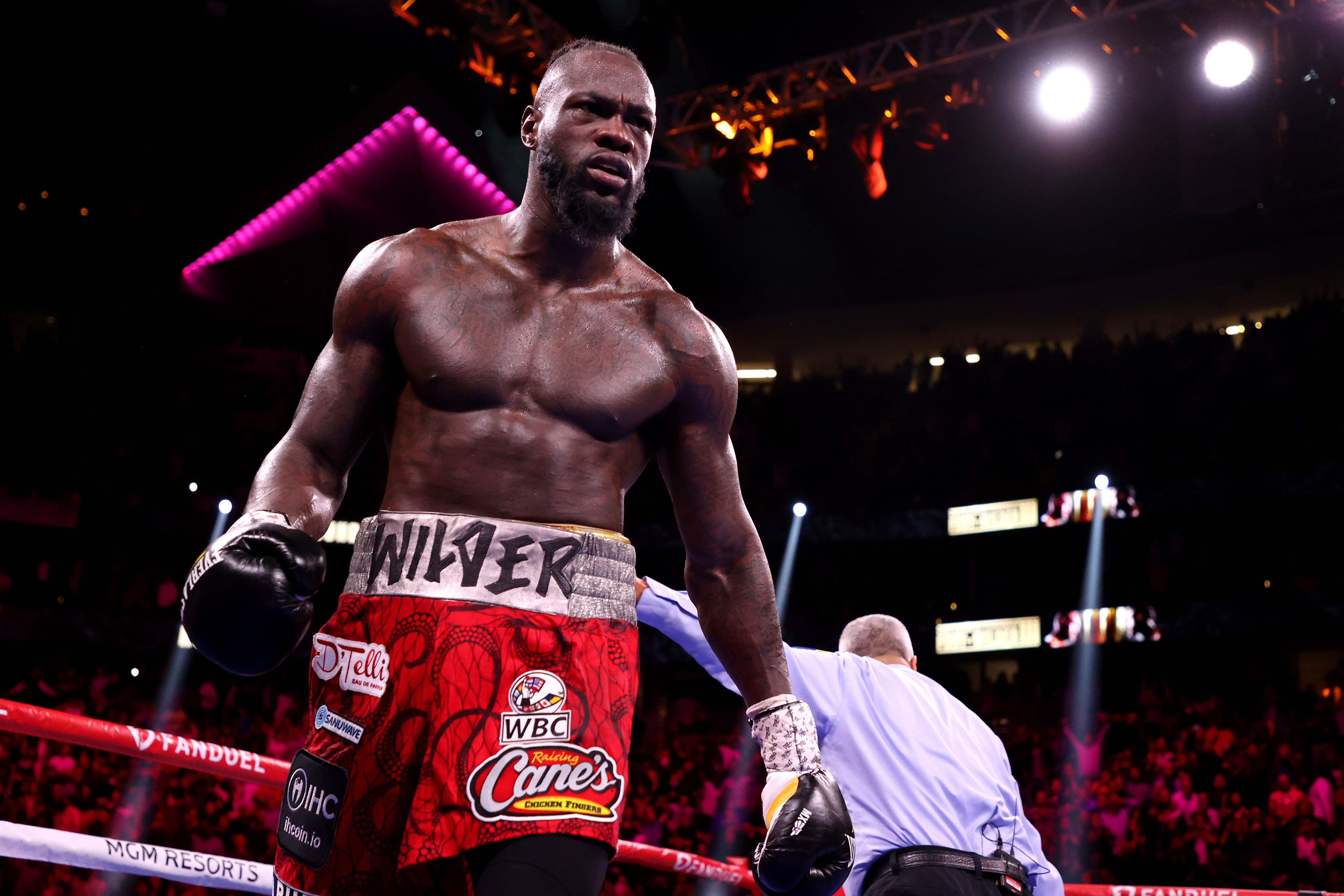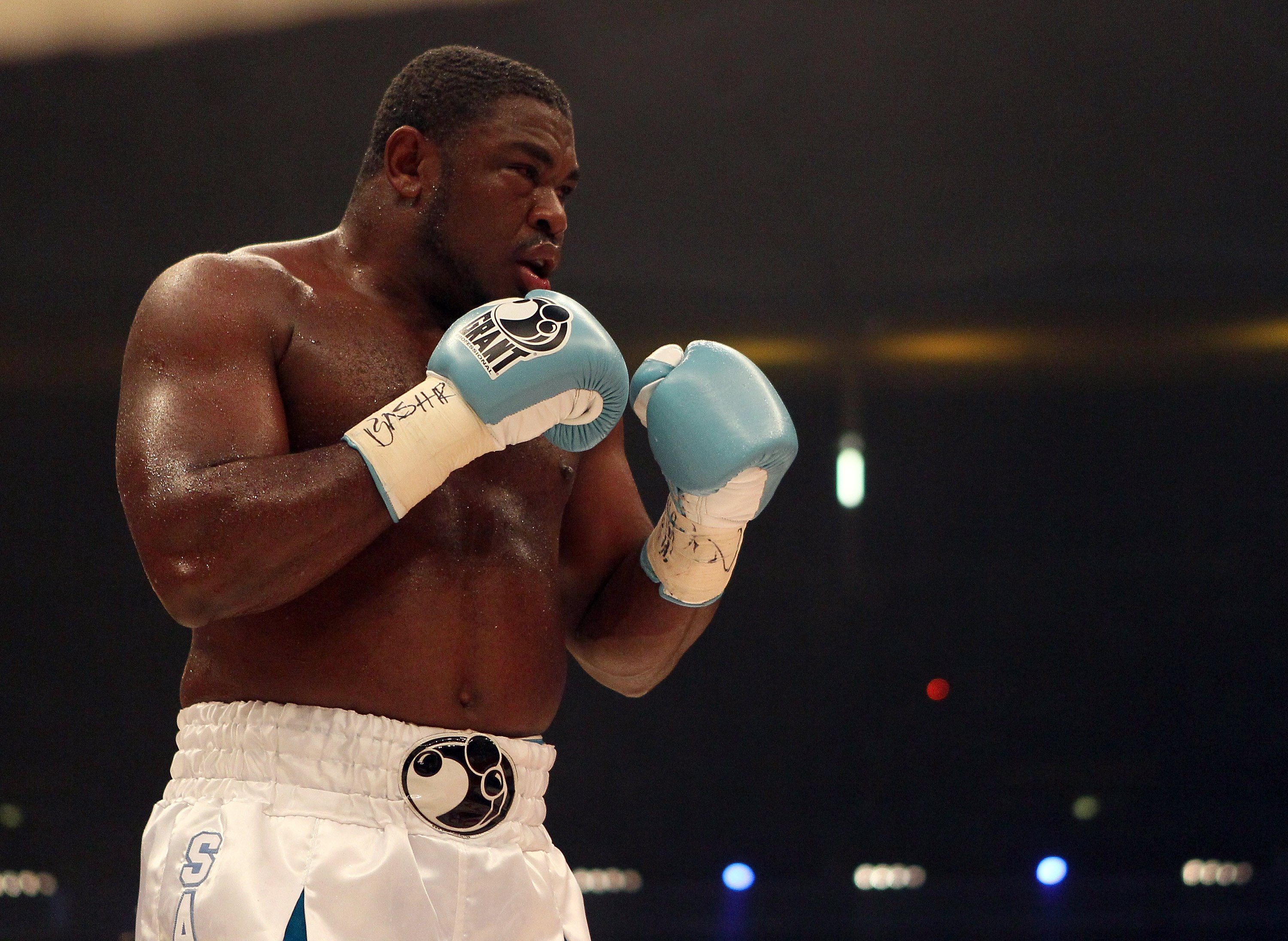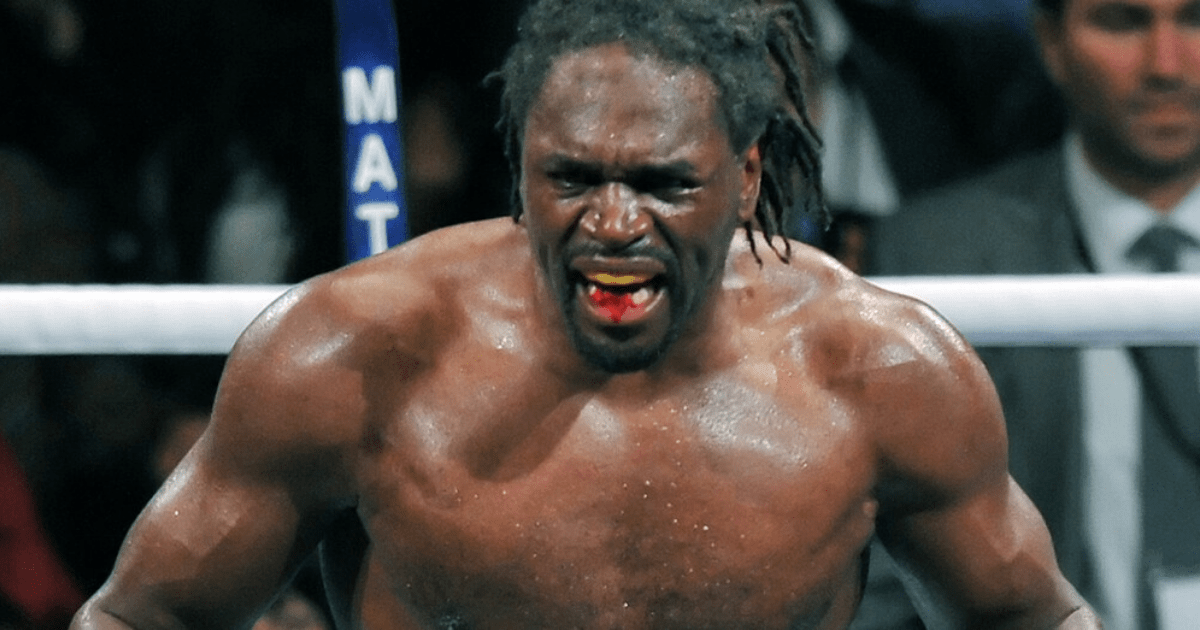BOXER Audley Harrison has revealed which opponent he faced had the hardest punch.
The 51-year-old was on the receiving end of four knockouts during his career and he gave a shock answer when choosing the hardest hitter he fought.
Audley Harrison snubbed a number of top fighters when naming the hardest punch he took
David Haye’s ‘Haymakers’ were not chosen by Harrison

Deontay Wilder beat Harrison by a knockout in 2013
The Olympic Games gold medallist in 2000 has stepped into the ring with heavyweights like David Price, David Haye and Deontay Wilder.
But none of those three, including the Bronze Bomber, who is regarded to have one of the biggest punches, was the hardest Harrison has been hit by.
Instead, he surprisingly singled out a man nicknamed ‘The Nigerian Nightmare’.
Harrison told Mega Casino about coming up against him, saying: “I always say the hardest puncher I ever faced in my career was Samuel Peter – ‘The Nigerian Nightmare’.
“I boxed him in a pre-Olympic tournament, with a headguard on, he hit me on the top of the head and it sent shockwaves all the way through my body.
“The thing with David Price, I went to sleep when he knocked me out. When you’re knocked unconscious like that, you don’t know too much about it.
“Deontay hit me and then he threw 100 punches after that, so it was just all a blur.
“I just took the Samuel Peter shot and the headguard probably stopped me from getting knocked out.
CASINO SPECIAL – BEST NEW CUSTOMER SIGN UP DEALS
But, I know that was the hardest shot I faced because it put me on Queer Street.
“The David Price and Michael Sprott knockouts put me to sleep.
I woke up and wanted to start fighting again, but my corner told me ‘Audley, the fight has been over for 30 seconds’.”
Peter held the WBC title in 2008 after beating Oleg Maskaev.
He then lost his belt to Vitali Klitschko later that year before losing to his younger brother Wladimir in 2010.
Peter ended his career with a 38-9 record with many of his losses coming towards the end of his time in the ring.
Hughie Fury, a relation to Tyson, Kubrat Pulev and Robert Helenius have all defeated him.

Samuel Peter was nicknamed ‘The Nigerian Nightmare’
Frequently Asked Questions
How long do boxers train a day?
Boxing trainers typically train for at least four hours per day. They learn new moves and practice their punches. Boxers often spar up to 10 times a week.
How do you practice boxing punches?
A punching bag is used to practice boxing punches. Once you feel comfortable with the technique, you can punch the bag. Then you move onto another part of your body. You can then move onto the next area once you are comfortable with that one.
How can I improve my punching technique?
The most important part of boxing is the punching technique. You must develop good punch technique if you want to become a better boxer. These tips will help improve your punching skills.
- Keep your head high. When you are throwing punches, your head should be raised.
- Punch from the shoulder. Try to punch from the shoulder, not the chin when you throw a punch.
- Pay attention to your feet. Focus on your feet when punching.
- Throw short, quick punches. Throwing longer punches will tire you out more quickly.
- Don’t forget about defense! Always remember to block incoming punches.
- Use your elbows. Elbows are an effective way to defend yourself.
- Learn to use your legs. If you learn to use your legs properly, they can help you avoid getting knocked down.
- Every day, practice. You will feel tired when you finish training. Keep going. You need practice to be successful at any task.
- Have fun Enjoy what’s going on.
- Remember to breathe. Being able to breathe properly will make you more powerful and provide you with energy.
- Relax. Do not worry about making mistakes. Focus on learning new things.
- Be patient. Boxing is hard. You will need to practice your boxing skills over time.
- Never stop improving. As long as there is room for improvement, there will be room for improvement.
- Listen to music. Music can be a great way to relax and concentrate while training.
- You can watch videos of professional boxers. You may be inspired to work harder by watching them compete.
- Read books. Reading helps you to understand boxing techniques.
- Take breaks. Sometimes, you need to take a break. Play soccer or basketball outdoors.
- Look for a coach. You can improve your boxing skills by having a coach who is knowledgeable.
- Do push-ups. Push-ups are great for endurance and strength building.
What is the difference between a left hook and a right cross?
A left hook is thrown to the side of your body, while a right-cross is thrown to the front.
A left hook is thrown facing the opponent with the back hand. The elbow is bent 90°, and the wrist is turned 45° towards the opponent.
A right cross is thrown with the palm facing the opponent’s face and the elbow straight. The wrist is turned 45 degrees away from the opponent.
What are the 7 punches of boxing?
The seven punches in boxing are jab, cross, hook, uppercut, straight right, left hook, and body shot. These punches attack the opponent’s head or body.
What are the different types and uses of boxing gloves?
There are three main types in boxing gloves: mitts; fingerless mitts; and full-fingerered. The padding around the knuckles of mitten gloves is called padding. Fingerless mitts, which do not provide padding around the fingers but cover them, have no padding at the knuckles. Full-finger gloves have padding all over the hand.
Mittens can be used for hitting the fist with your fist. Fingerless mitts gloves are designed for striking or punching with your index finger’s index finger. Full-fingered boxing gloves are used for punching with the whole fist.
Statistics
- It is just like normal sparring with a partner, but you want to throw punches at 75% of your normal speed. (wikihow.com)
- This article received 39 testimonials and 89% of readers who voted found it helpful, earning it our reader-approved status. (wikihow.com)
External Links
boxandflow.com
expertboxing.com
How To
These are the basics of boxing
How to effectively box
Boxing is a popular sport. It involves two people who attempt to knock each other out of their heads. Each country has its own rules. There are generally three types of boxing: Amateur, Professional, and Olympic.
Amateur boxing may be done at school, college, and university. This boxing style includes sparring sessions without protection, using padded gloves. Amateur boxing contests are usually three rounds in length, lasting five minutes each. Amateur boxing can be done in many styles, including Kickboxing and Muay Thai, Taekwondo or Karate, Judo, Wrestling, and Muay Thai.
Boxing professionals are usually trained in clubs, gyms, or stadiums. They wear protective equipment such as mouthpiece, nose guard, shin guards, elbow pads, knee pads, waist belt and groin protector. Professional boxing competitions have six rounds that last four minutes each. There are many different types of professional Boxing such as Boxing, MMA, Kickboxing, Muay Thai or Taekwondo.
Olympic boxing is practiced at the Olympics. Boxers are required to wear international standards-compliant protective gear. The eight rounds last three minutes each and are held over eight rounds. Olympic boxing can be divided into two types: Light Flyweight (Heavyweight) and Heavyweight (Light Flyweight).
Boxing’s fundamental skills are:
- Punching techniques
- Guarding techniques
- Footwork
- Stance
- Moving your body
- Defense
- Combination
- Rotation
- Spares
Punching Techniques
There are seven types. Each punch has its own technique. Some punches need more power than others. For example, an uppercut is a powerful punch. A straight punch on the other side requires less power, but is more effective than other punches.
There are many combinations that can be used to punch. These are combinations of punches which work together to achieve a goal. A combination can contain multiple parts. An example of this is a left hook, followed by a right crossing. This will damage the opponent’s jaw.
Guard Techniques
Boxers protect themselves by protecting their bodies. He does this by using his legs, arms, elbows, hands, knees and feet.
Legs
Boxers should use their legs to defend against kicks. When he receives a kick, he raises his leg and moves away from the attacker. To avoid being kicked on his side, he will bend his knees if the attack is from the front. If the attack comes from behind, however, he can stand straight up and block the kick by his foot.
Elbows
Because elbow strikes inflict a lot of pain, they are very effective. An elbow strike can be delivered directly or indirectly. Directly means that your opponent is hit with your forearm. However, indirectly means that your elbow strike is delivered with another part or your arm.
Hands
Boxers use their hands as a shield against incoming punches. Boxers raise their fists to block incoming blows and then move in the direction of the attacker’s attack. Then they make contact with the attacker’s fist.
Knees
Boxers should bend their knees when receiving blows to the abdomen, stomach, or chest. Knee strikes are often used for defense purposes.
Feet
A boxer should take control of an attack and respond with counter-attacks. This way, he can gain distance between himself and his opponent. Also, boxers must maintain their balance while delivering counter-attacks.
Stances
A boxer must have a stance in order to be effective at boxing. His stance will determine how he defends. It defines where he faces his opponent and how he positions his body. Boxers have many options for stances. Here are some of the more popular ones:
- Low stance
- High stance
- Southpaw stance
- Western stance
Moving your body
A boxer must change his position, speed and rhythm in order to win the fight. This includes changing speed, position and rhythm.
Rotation
A boxer will rotate his arm when he is throwing a punch. Depending on the type and size of punch, the speed at which the rotation takes place varies.
Combinations
The timing of each punch determines the effectiveness of a combination. A combination of strong and weak punches will produce a good result.
Spares
Sparring is a training session that improves boxing skills. Sparring allows a boxer to improve his mental and physical skills. Sparring is a way to learn how to fight without getting hurt.
To sum it all, boxing requires patience and dedication. To be a better boxer you need to train hard.

